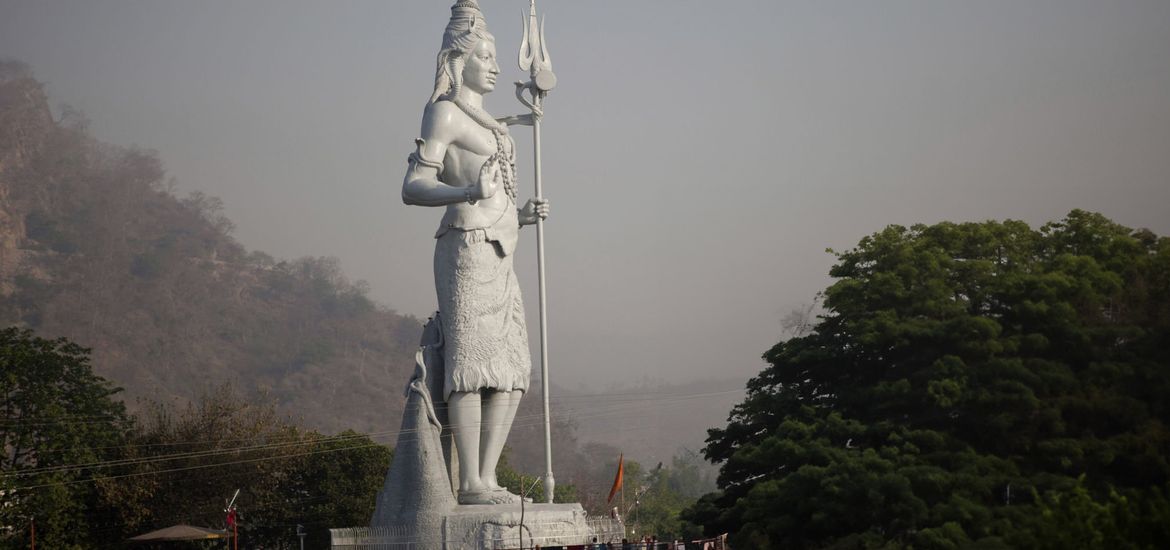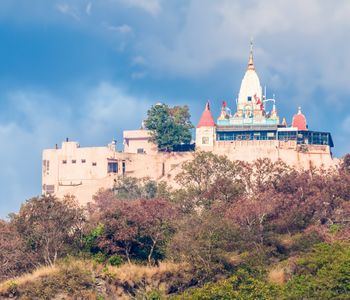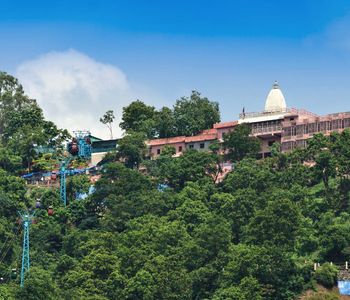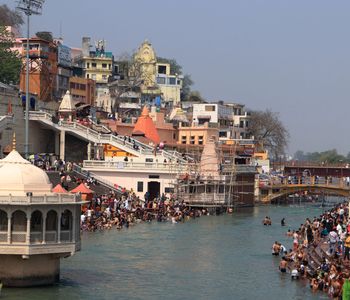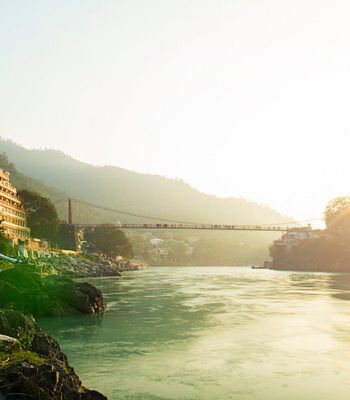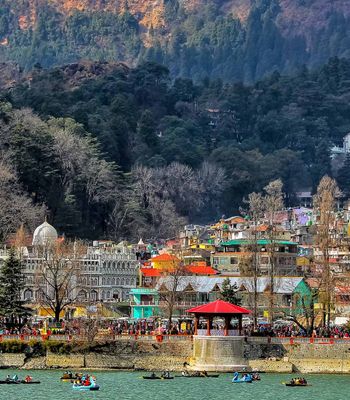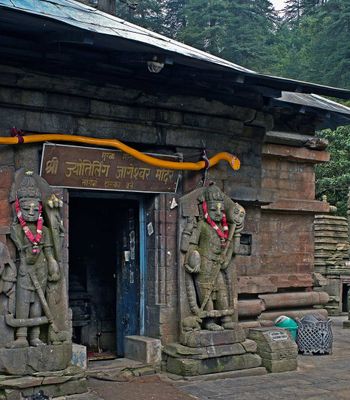Daksh Mahadev Temple, also known as Shree Daksheshwar Mahadev - Daksh Prajapati Temple, is a sacred temple dedicated to Lord Shiva. It’s located in Kankhal, a small, peaceful town just 4 km from Haridwar, Uttarakhand.
The temple is named after King Daksha Prajapati, the father of Sati, Lord Shiva’s first wife. According to the scriptures, Daksha was one of the fourteen Prajapatis—the creators of life in Hindu tradition.
A Temple Built from Devotion and History
The temple was first built in 1810 by Queen Dhankaur from the Gurjar dynasty of Landaura. She belonged to a royal estate that played a major role in preserving this holy place. Later, in 1962, the temple was renovated to keep its beauty and spiritual energy alive. Even today, the temple is managed by the Mahanirvan Akhara in Kankhal, with Mahant Ravindra Puri helping oversee the temple’s care and legacy.
This temple is also at the heart of a truly intense mythological story called the Daksha Yajna. According to the legend, King Daksha organised a religious ritual called a yajna but intentionally did not invite Lord Shiva. His daughter, Sati, who was married to Shiva, felt heartbroken and deeply insulted. Even though she wasn’t invited, she still went, hoping her father would change.
But when she saw Shiva being disrespected openly, she was so devastated that she jumped into the fire of the yajna and gave up her life. Lord Shiva, in his fury, created Virabhadra, a fierce warrior, and sent him, along with his army of spirits, to crash the ritual. They destroyed the ceremony and even beheaded King Daksha. Later, upon the request of Lord Brahma and other gods, Shiva gave Daksha a second chance at life, but with the head of a goat.
It’s said that after Sati’s death, Shiva wandered in grief, carrying her body. To help him move on, Lord Vishnu used his Sudarshan Chakra to cut Sati’s body into pieces. These pieces fell all across India and became Shakti Peeths. One of them is believed to be right here in Kankhal, where this temple was later built.
The Architectural Beauty Inside the Temple
The Daksh Mahadev Temple is located right next to a quiet tributary of the Ganga River at the base of the beautiful Shivalik Hills. The temple has two main parts:
- One part contains the Yajna Kund, the exact spot where Sati is believed to have sacrificed herself.
- The other part has the Shiva Linga, the sacred symbol of Lord Shiva. Devotees pour milk, water, and flowers over it while praying.
The walls of the temple show paintings and carvings that explain the entire Daksha-Sati-Shiva legend. There is also a massive banyan tree inside the temple complex, believed to be thousands of years old and super sacred.
Hidden Wonders Around the Daksh Mahadev Temple
Visiting Daksh Mahadev Temple is already a powerful experience, but the real magic unfolds when you explore what’s around it.
Hari Har Ashram
Just across from the main temple lies the Hari Har Ashram, home to a jaw-dropping Shivling made of parad (solidified mercury). Devotees from all over the country visit to offer their prayers here, believing that the parad Shivlings hold immense spiritual power and healing energy.
Shree Ma Anandamayi Ashram
Right opposite the temple is the Shree Ma Anandamayi Ashram, a quiet, serene space dedicated to the great spiritual teacher Ma Anandamayi. Whether you meditate, pray, or simply sit in silence, this place will ground you in ways words can’t explain.
Das Mahavidya Temple
Standing tall beside the main Daksh Mahadev Temple is the Das Mahavidya Temple, dedicated to the ten fierce forms of Goddess Shakti. This temple becomes a powerhouse of devotion during Navratri as worshippers of the Divine Feminine gather here for special rituals and pujas.
Seasonal Insights: Planning the Perfect Visit to Daksh Mahadev Temple
Daksh Mahadev Temple welcomes visitors all year round, and no matter when you go, you’ll feel the deep spiritual energy in the air. The temple is officially open from 6:00 AM to 8:00 PM daily, allowing ample time for visitors to explore the premises and participate in rituals throughout the day.
If you’re looking for peace and cooler weather, the months from November to March are ideal. The air is crisp, and the temple’s surroundings feel extra calm and pleasant.
Finding Your Way to Daksh Mahadev Temple
Getting to the temple is simple, no matter where you’re coming from. Here’s a quick guide:
By Air
The closest airport is Jolly Grant Airport (DED) in Dehradun, about 40 km away from Haridwar. From the airport, you can hire a taxi or take a bus to Kankhal, the neighborhood where the temple is located.
By Train
Haridwar Junction is the nearest railway station, only about 4 km from the temple. It’s well-connected to major cities like Delhi, Mumbai, Jaipur, and Kolkata. Once you arrive, hop in an auto-rickshaw or cab, and you’ll be at the temple in 10–15 minutes.
By Road
Haridwar is easily accessible by road, with national highways linking it to most major cities in North India. Once you’re in Haridwar, just head toward Kankhal with the help of any local taxi or rickshaw driver. They will know the way to the Daksh Mandir.
Auspicious Hours at Daksh Mahadev Temple
The Daksh Mahadev Temple is a hot spot during certain times of the year.
- Maha Shivratri: This is the temple’s biggest celebration. Thousands of devotees gather here to offer prayers to Lord Shiva and take part in powerful rituals. The entire temple complex is decorated, and the energy is both ancient and electric.
- Sawan Month: This holy month, usually July–August, is dedicated to Lord Shiva. Devotees come in massive numbers, often walking barefoot, to offer Gangajal and other sacred items. The temple is especially crowded on Mondays during Sawan.
From deep-rooted mythology to breathtaking rituals, Daksh Mahadev Temple offers something more than just sightseeing; it offers a profound glimpse into the timeless tales that continue to shape India’s sacred geography. If you’re someone who’s curious about stories, spirituality, or just wants a break from the chaos of city life, Daksh Mahadev Temple is worth a visit.
